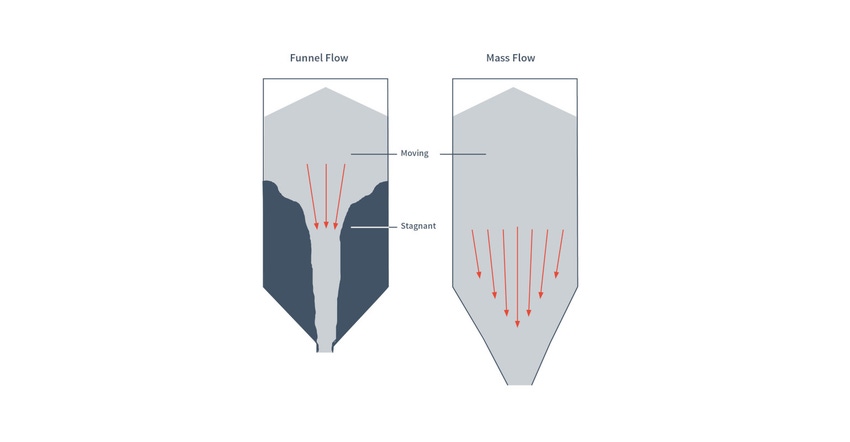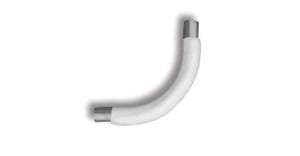There is more than meets the eye when selecting a feeder
July 12, 2022

Colin Barbeau, bulk materials handling specialist, Hatch
A feeder is a very important piece of equipment. It reclaims bulk material from a silo or stockpile and feeds it consistently to equipment downstream. A defective feeder that plugs or provides unreliable flow rate will have negative impacts on the process. During my 15-year career in bulk materials handling, I have often come across feeders that are not appropriately selected or designed for the task. It is, therefore, very important to select the right type of feeder for a given application. Many factors influence this selection, which is why I’m sharing a list of important considerations when choosing a feeder. I suggest using this list as a guide to determine the layout and bulk handling application that will be required of the feeder. Once this is done, equipment suppliers and bulk handling engineers will be able to help find the feeder type and model best suited for your needs.
1. Target Capacity
This is self-explanatory: What is the required capacity in tn/hr that the feeder needs to extract from the silo? Feeder types have various capacity ranges, which will narrow the field of candidates.
2. Capacity Measurement
Most feeders are volumetric (i.e. they output a certain volume of material per unit of time; usually cu ft/min or cu m/hr). For some applications, the volumetric flow rate might be sufficient (needing to move a pile of material from point A to point B or needing to fill a silo equipped with a high-level switch).
Multiplying the volumetric flow rate with the material bulk density provides the feeder gravimetric flow rate (usually in lb/min or tn/hr). In some process plants, if the bulk density of the material does not fluctuate too much over time or show slight variations when the material is uncompacted or compacted in the silo, or if the process is not very sensitive to flow rate fluctuations, a theoretical gravimetric flow rate can be sufficient. The material volumetric rate will be constant, but the gravimetric rate (tonnage) will not be constant.
However, if the process in sensitive to the material tonnage, most of the time the material needs to be weighted on the feeder or at the feeder discharge. A control loop usually adjusts the feeder speed, following the bulk density variations over time, to feed a constant tonnage of material downstream. Some feeders are better suited than others to weight the material. Some feeders cannot weight the material and a scale will need to be installed in its discharge chute or on the equipment downstream.
While working on finding the best feeder and scale combination, it is important to know what the required accuracy is. A few percent difference in the required accuracy heavily impacts the available options.
3. Silo Size
What is the retention time and volume of the silo? It might not be practical as an example to use a very small feeder if the silo is very large. This could result in an oddly shaped silo once the wall angles requirements are implemented.
4. Silo Geometry
There have been many articles written on funnel flow and mass flow silos and feeders. It would take too long to explain this topic in detail, so I encourage the reader to Google it and decide what type of flow is required in the silo. The construction material of the silo walls, wall angles, and opening size must be designed to prevent bridging and ratholing, and procure the required flow regime. Specialized companies can test material samples and generate the silo geometry requirements. From the feeder perspective, the key point to remember is that it needs to work hand in hand with the silo geometry and, most of the time, needs to extract material consistently from the whole silo opening. In short, the silo geometry needs to be known to correctly select a feeder.
5. Lump Size
Material maximum lump size will influence the required silo opening dimensions to prevent blockage. Lump size will also directly impact the feeder size and the feeder speed for a given capacity. Each type of feeder has its own guidelines for sizing requirements versus percentage of lumps to prevent feeder blockage.
a. Lump size does not necessarily mean maximum particle size. Some materials can form large lumps if compacted, dried, when absorbing moisture, or left to freeze. The material capacity to form lumps needs to be well understood. Silos can be blanketed with moisture-free gas to prevent lumping of hygroscopic materials, or heated to prevent frozen lump formations.

6. Isolation Gate
It is good practice to include an isolation gate between the silo and the feeder. This allows for the safe execution of emergency repairs on the feeder with the silo full of material. Depending on the feeder type and size, these gates can be large and impact the plant layout. It might also be decided to not install a gate if the application is robust and reliable enough and if preventive maintenance on the feeder is scheduled appropriately.
7. Emergency Silo Discharge
It is also good practice to determine if an emergency silo discharge is required in case the feeder is out of service for a prolonged period of time or the downstream process needs to be shut down. Some materials should not be left in the silo for long periods of time: Moist materials in cold climate, hygroscopic materials, and materials that consolidate in the silo after a certain period of rest. This requires a case-by-case analysis and, usually, a custom discharge solution (vacuum truck, side door, etc.).
8. Plan Layout
Obviously, not all feeders have the same geometry, which influences feeder selection, as the first choice might not fit into the layout without reworking or optimizing the equipment/building around it. This is sometimes overlooked, which causes a costly delay in the project while another feeder is considered and selected.
9. Material Cohesivity
Some feeders need the material to be bone-dry and free-flowing, while others are specialized to deal with moist or cohesive materials.
10. Material Abrasivity
Some feeders generate a lot of friction against the material and are less suited for very abrasive materials.
11. Particle Size
With very fine particle size comes a set of additional factors to consider:
a. Some powders are permeable to air, which restricts the gravimetric flow rate a given silo opening can generate. The opening might need to be oversized to compensate for this.
b. Some powders will get easily fluidized (such as when free falling in a silo during first fill) and can keep this state for a long period of time. This means the feeder needs to be able to completely block a flow of material that behaves like a liquid. Some feeders can’t handle fluidized materials, meaning that the flow rate will be erratic or worse (e.g. the downstream equipment and surroundings could get completely flooded).
12. Dust Control Requirements
Some feeders provide a completely sealed interface with the silo and downstream equipment, while others generate dust. This is something to consider depending on the dust emissions requirement of the application (clean building, explosive material, toxic material, maximum emissions targets, etc.).
Summary
Hopefully, this list has shown that there is more than meets the eye when selecting a feeder. The feeder and silo need to be treated as a single entity as they must work hand in hand for better or for worse. The good news is that following a structured workflow in the feeder design/selection process, and making sure to leave no stone unturned as the project moves forward, allows one to mitigate risks and come up with the best solution for a given application.
Colin Barbeau is bulk materials handling specialist, Hatch (Mississauga, ON, Canada). For more information, call 905 403-4004 or visit www.hatch.com.
You May Also Like


